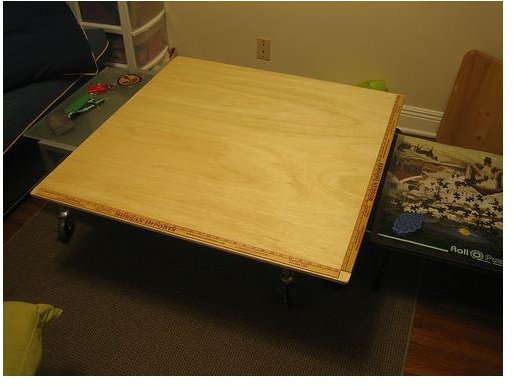Formaldehyde Free Plywood - Alternatives to Formaldehyde
Formaldehyde is a chemical with many industrial applications; one of the largest of these is in plywood. According to www.turi.org1, about 64% of the formaldehyde produced worldwide is used in plywood or other wood products such as particleboard. The resin used to make most manufactured wood products is formaldehyde-based. In plywood, many layers of wood are glued together using a resin. This resin must be cheap, durable, and water-resistant. The most common type of resin used is urea-formaldehyde, or UF. Another type, phenol-formaldehyde (PF) is intended primarily for exteriors.
Although formaldehyde-based resins do a good job, they come with potentially dangerous side-effects. UF and PF-based products off-gas formaldehyde, which has several known health effects. Formaldehyde is a noxious gas with a strong odor and irritating effects. It causes DNA damage at high levels. Several agencies, including the EPA2, have determined that formaldehyde is a carcinogen, meaning that it causes cancer. Awareness of the problem of off-gassing first rose in the 1980’s, when high levels of the gas were detected in mobile homes. Since then, regulations have controlled the levels of formaldehyde off-gassing allowed in consumer products. Still, recent issues in the news (such as dangerously-high levels of formaldehyde in FEMA trailers and Chinese-made drywall) have brought the issue back to the forefront. Many consumers are now demanding a safer alternative to formaldehyde in plywood.
Image: Flickr - Puzzleboard
Formaldehyde Alternatives
The currently available alternatives to formaldehyde are somewhat limited. However, the growing public demand for “green” products is driving research on new resin technologies. It is likely that more alternatives will be developed in the near future.
One safer alternative is low-emitting resins. These resins are not formaldehyde-free, but they do off-gas much less formaldehyde. The most common low-emitting resin is phenol-formaldehyde, which is often used for exterior panels and other non-decorative applications. One drawback of this resin is that it is red-black in color, making it a poor option for visible uses. In addition, it does still emit formaldehyde, albeit in low concentrations. Proper ventilation can maintain formaldehyde levels at a near-undetectable concentration.
MDI (methyl diisocyanate) resins are a popular “green” alternative. These resins are polyurethanes and do not contain formaldehyde. LEED recognizes MDI-based materials as “low-emitting"3; however, these materials carry a significant price premium. Growth in demand may lead to lower cost. Another issue with MDI resins is that MDI is, itself, a toxic chemical. Wood products made with MDI may not off-gas formaldehyde, but the chemical cannot be considered “natural” or even particularly green.
The above resins were not rated safe by the Toxics Use Reduction Institute (TURI) due to their levels of toxic chemicals. TURI identified 4 priority alternatives to formaldehyde. One of these is the Purebond panel, made by Columbia Forest Products. This panel uses a soy-based resin. The Purebond panel is a good option for consumers looking for a natural alternative to formaldehyde-based plywood, since it is derived from a plant.
Two other alternatives are made in a different way, and seek to replace plywood rather than the resin. One of these is recycled paper boards, made by Homasot. The other alternative is the wood fiber-Portland cement board, manufactured by Viroc. Several companies make recycled paper products, such as Thermoply boards from Covalent Coated Products. Finally, one new technology is plastic-wood fiber panels. These products bind wood fiber with plastic to create a strong, non-emitting product.
Conclusion
There are many alternatives to conventional formaldehyde-based plywoods. These alternatives range from low-emitting to totally non-emitting. The alternatives may be expensive, so make sure to evaluate all the available options before making a choice. Also consider the role that proper ventilation plays in making a home safe. If air is cycled out of a room sufficiently quickly, formaldehyde levels can be maintained below the safety threshold. This is important even if the building materials used for a home are non-emitting, as many other consumer products (including most furniture) are known to off-gas formaldehyde and other toxic gases.
Sources
1. Five Chemicals Study. Chapter 4: Formaldehyde
2. An Introduction to Indoor Air Quality (IAQ)
3. LEED Credit EQ-4.4: Low-Emitting Materials - Composite Wood
